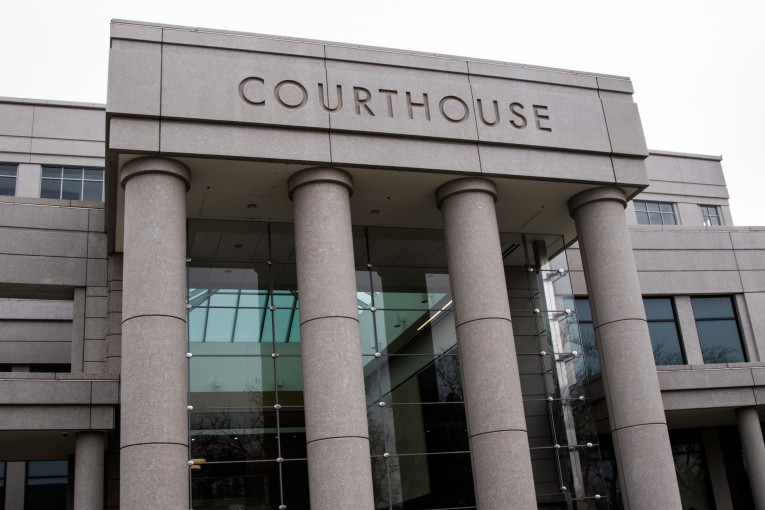

By Matthew Torres and Tori Gacutan
WOODLAND, CA – The evidence portion of a drunk driving misdemeanor trial concluded Tuesday in Yolo County Superior Court, one day after a Monday start.
Deputy District Attorney Gustavo Figueroa called Officer Carlos Soria of California Highway Patrol to the stand—Soria was the first officer to interact with the accused (the Vanguard doesn’t normally name misdemeanor accused) after the CHP received a report of a pedestrian walking along the I-5 Interstate Highway.
Officer Soria said after initially speaking with the pedestrian he immediately smelled the odor of alcohol from his breath, which the officer noted is an objective sign of intoxication.
The second witness the prosecution called was Officer Nahum Nava of the Woodland Police Department. He was assigned as the Preliminary Alcohol Screening (PAS) coordinator for the department at the time of the incident.
Officer Nava shared that, as a PAS coordinator, he was responsible for performing accuracy checks on devices used during field sobriety tests (FST) and transferring data from the devices to the Department of Justice which keeps records of the data.
Additionally, he described the process of performing accuracy tests on the devices. He also testified he does not recall specifically performing an accuracy test on a device before it was used to administer a FST on the defendant the morning of his arrest.

The third witness, Kimberly Sand, a Senior Criminalist for the Department of Justice, was able to clarify and explain the effects of drinking ethyl alcohol while driving. Sand was recognized by the court as an expert in forensic analysis of alcohol, calibration of breath-test devices, and the interpretation of blood alcohol results.
According to Sand, the consequences of drinking alcohol include “mental impairment, which affects the brain’s ability to acquire, process and make decisions off the information it is receiving, and physical signs and symptoms of impairment, such as slurred speech, bloodshot eyes…”
Further questioning revealed that a FST instrument is used to determine whether a person is under the influence because it reads the level of that person’s blood alcohol content (BAC). These devices are checked regularly in order to make sure the BAC is accurate.
In this case, Sand declared that because of regular accuracy checks and the functionality of the devices, the FST device was performing correctly.
In fact, Sand explained that if an accuracy check has not been completed within 10 days or on 150 subjects, “the device locks and is not allowed to be used, unless a passing accuracy check is performed.” The BAC samples collected from the defendant that night, assuming they were good, were in compliance with Title 17, establishing the validity of the test results to be used in court.
Procedures, the jury was told, are taken to be in accordance with Title 17 and include collecting samples from subjects after a minimum of “a 15-minute observation period, where the law enforcement officer needs to observe the subject to ensure no regurgitation occurs, no drinking of additional beverages, no eating, no vomiting, and anything that could potentially affect giving the instrument an artificially high reading.”
Otherwise, failing to comply with this procedure as a law enforcement officer violates Title 17 and would nullify the BAC number collected from the defendant.
With Sand’s access to DOJ records, she was able to testify that there was an accuracy check on the device used for FST performed Oct. 29, 2021, the day before the incident, and it passed.
The jury returns Wednesday for closing arguments and deliberation.